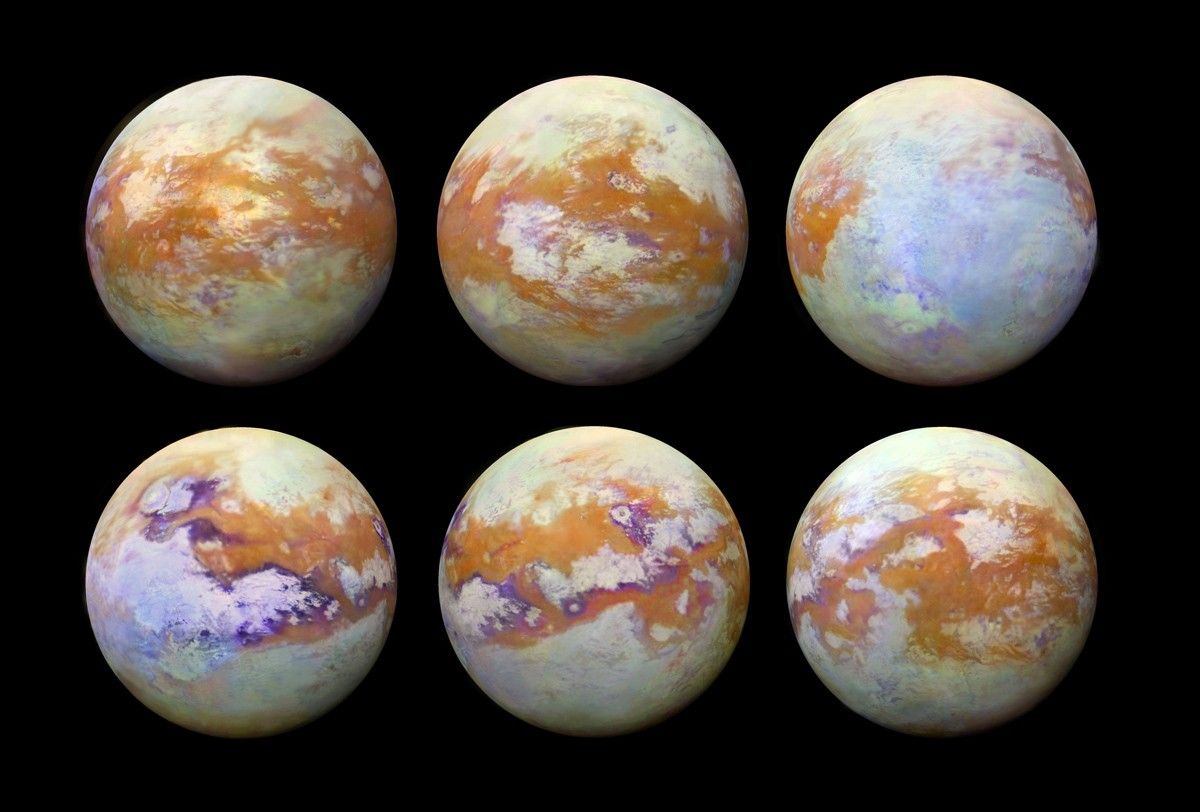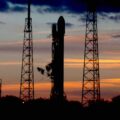Impossible molecular combinations are possible on Saturn’s moon Titan, say researchers from NASA and Sweden’s Chalmers University of Technology, according to new findings that change our understanding of chemistry on the potentially life-containing moon.
The unusual conditions stem from Titan’s frigid environment, reaching temperatures so low that typically incompatible polar and nonpolar substances will mix. In the quest to understand if or how life arises beyond Earth, this new knowledge of chemistry opens up fresh possibilities for the emergence of extraterrestrial life.
Saturn’s Moon Titan
Despite its extreme cold, Titan mimics the early Earth in some important ways, including its nitrogen and methane-heavy atmosphere. As a potential host for life, scientists have long recognized the Saturnian moon as one of the most promising locations in our solar system. Exploring those possibilities, even if future work yields negative results, will help researchers better understand the chemical processes that produced life on Earth.
The unexpected results from the new study, published in the Proceedings of the National Academy of Sciences, may also help to inform how scientists move forward in exploring Titan’s chemistry for signs of ET.
“These are very exciting findings that can help us understand something on a very large scale, a moon as big as the planet Mercury,” said co-author Martin Rahm, an Associate Professor at the Department of Chemistry and Chemical Engineering at Chalmers.
Polar Molecules
At the heart of the discovery is the interaction between polar and nonpolar molecules. Polar molecules are defined by their unequal sharing of electrons between atoms, which results in two oppositely charged poles, similar to the ends of a magnet. Nonpolar molecules do not feature two separate charges across their surface. Under normal conditions, these molecules refuse to combine, similar to how oil and water do not mix.
Titan’s atmosphere contains both types of molecules, with hydrogen cyanide representing the polar type, while methane and ethane are both nonpolar. The new work proves that these substances can combine to form crystals, an unexpected chemical combination that shows even more may be occurring in Titan’s atmosphere than expected.
“The discovery of the unexpected interaction between these substances could affect how we understand the Titan’s geology and its strange landscapes of lakes, seas and sand dunes,” Rahm said. “In addition, hydrogen cyanide is likely to play an important role in the abiotic creation of several of life’s building blocks, for example amino acids, which are used for the construction of proteins, and nucleobases, which are needed for the genetic code.”
“So our work also contributes insights into chemistry before the emergence of life, and how it might proceed in extreme, inhospitable environments,” Rahm added.
An Alien Atmosphere
The initial problem that the team set out to solve was the fate of Titan’s hydrogen cyanide. Following the molecule’s creation, the team wondered if it was deposited on the surface or whether it had further interactions with its environment. To test this, they cooled hydrogen cyanide to temperatures reaching -180 degrees Celsius, mimicking those on Titan, before adding in the methane and ethane also present in the moon’s atmosphere. When cooled to such temperatures, methane and ethane become liquids, while hydrogen cyanide crystallizes. Investigating the mixtures at the atomic level, laser spectroscopy revealed an unexpected combination.
“This led to an exciting theoretical and experimental collaboration between Chalmers and NASA,” Rahm said. “The question we asked ourselves was a bit crazy: Can the measurements be explained by a crystal structure in which methane or ethane is mixed with hydrogen cyanide?
“This contradicts a rule in chemistry, ‘like dissolves like’, which basically means that it should not be possible to combine these polar and nonpolar substances,” Rahm added.
Simulating Impossible Combinations
Using computer simulations, the team tested thousands of molecular combinations and discovered that the polar and nonpolar combinations resulted in a structure called co-crystals. In the co-crystals, hydrogen bonding resulted in hydrocarbons that pierced the hydrogen cyanide crystal lattice, producing a stable new form.
“This can happen at very low temperatures, like those on Titan. Our calculations predicted not only that the unexpected mixtures are stable under Titan’s conditions, but also spectra of light that coincide well with NASA’s measurements,” Rahm explained.
While the discovery does push against expectations, the team sees this as a unique circumstance that doesn’t fundamentally alter our understanding of chemistry.
“I see it as a nice example of when boundaries are moved in chemistry and a universally accepted rule does not always apply,” Rahm said.
Visting Titan
This Earthbound research will be valuable in the next decade, when NASA’s Dragonfly space probe investigates the surface of Titan. Currently scheduled for 2034, the probe is tasked with searching for prebiotic chemistry and any signs of life.
Rahm’s team will continue its research into hydrogen cyanide chemistry, seeking to understand how its findings may apply to Titan and other cosmic environments.
“Hydrogen cyanide is found in many places in the Universe, for example in large dust clouds, in planetary atmospheres and in comets,” Rahm said. “The findings of our study may help us understand what happens in other cold environments in space. And we may be able to find out if other nonpolar molecules can also enter the hydrogen cyanide crystals and, if so, what this might mean for the chemistry preceding the emergence of life.”
The paper, “Hydrogen Cyanide and Hydrocarbons Mix on Titan,” appeared in Proceedings of the National Academy of Sciences on July 23, 2025.
Ryan Whalen covers science and technology for The Debrief. He holds an MA in History and a Master of Library and Information Science with a certificate in Data Science. He can be contacted at ryan@thedebrief.org, and follow him on Twitter @mdntwvlf.

